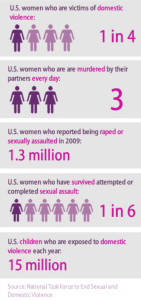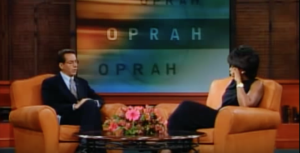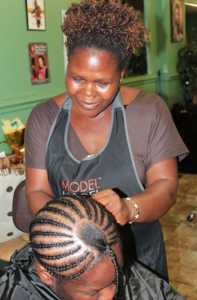 This week, I will be reviewing the novel, Beauty Queens by Libba Bray. On the surface this book might seem like just another young adult fiction story, but its message is so much more impactful than most other books I’ve read from this genre. It confronts the truth behind our daily lives by dealing with race, sexism, and stereotypes, while managing to keep a light, sarcastic tone. This is especially important when dealing with these serious issues because this book is targeted primarily to teenage girls. It makes the important message accessible and appealing to them.
This week, I will be reviewing the novel, Beauty Queens by Libba Bray. On the surface this book might seem like just another young adult fiction story, but its message is so much more impactful than most other books I’ve read from this genre. It confronts the truth behind our daily lives by dealing with race, sexism, and stereotypes, while managing to keep a light, sarcastic tone. This is especially important when dealing with these serious issues because this book is targeted primarily to teenage girls. It makes the important message accessible and appealing to them.
 Libba Bray was born on March 11, 1964 and grew up in Denton, Texas. Her mother was a high school English teacher and her dad was a Presbyterian minister. Three weeks after her high school graduation, she was involved in a car accident that caused her to undergo thirteen surgeries over the span of six years to reconstruct her face. She has an artificial left eye because of the accident. She graduated from University of Texas, Austin in 1988 with a degree in Theater. Bray moved to New York City and worked for a publishing agency. There, she met her husband, who encouraged her to write a young adult novel.
Libba Bray was born on March 11, 1964 and grew up in Denton, Texas. Her mother was a high school English teacher and her dad was a Presbyterian minister. Three weeks after her high school graduation, she was involved in a car accident that caused her to undergo thirteen surgeries over the span of six years to reconstruct her face. She has an artificial left eye because of the accident. She graduated from University of Texas, Austin in 1988 with a degree in Theater. Bray moved to New York City and worked for a publishing agency. There, she met her husband, who encouraged her to write a young adult novel.  Bray published her first novel, A Great and Terrible Beauty in 2006, which became a New York Times bestseller. She wrote two more novels to complete the trilogy. Beauty Queens was published in 2011. She currently lives in New York with her husband and teenage son.
Bray published her first novel, A Great and Terrible Beauty in 2006, which became a New York Times bestseller. She wrote two more novels to complete the trilogy. Beauty Queens was published in 2011. She currently lives in New York with her husband and teenage son.
Fifty contestants in the Miss Teen Dream Pageant become stranded on a deserted island after their plane crashes with little food and water. This initially appears to set up a female version of Lord of the Flies.  Considering the premise, a plane full of pageant contestants crash on a small tropical island, it seems like another excuse to pit girls against one another with teenage beauty queens tearing apart competition to fend for themselves while awaiting rescue. But Bray subverts that paradigm of girl-on-girl psychological fighting as a spectator sport, where the girls com
Considering the premise, a plane full of pageant contestants crash on a small tropical island, it seems like another excuse to pit girls against one another with teenage beauty queens tearing apart competition to fend for themselves while awaiting rescue. But Bray subverts that paradigm of girl-on-girl psychological fighting as a spectator sport, where the girls com e together in time of crisis. She focuses on the way girls are portrayed by the media, jealous, competitive, and vindictive and turns that on its head. That’s how some of the girls start out because of the internalized misogyny and male gaze of the media. But while they may argue and bicker endlessly in the beginning, the girls discover more than competition in themselves and that’s when their friendships truly begin. The island serves as a place where the girls can get away from the society that pressures them into hurting themselves and each other. It’s a place where they realize that under the methodically constructed beauty pageant personas, they’re all just girls trying to grow up in a world that always wants them to be someone else.
e together in time of crisis. She focuses on the way girls are portrayed by the media, jealous, competitive, and vindictive and turns that on its head. That’s how some of the girls start out because of the internalized misogyny and male gaze of the media. But while they may argue and bicker endlessly in the beginning, the girls discover more than competition in themselves and that’s when their friendships truly begin. The island serves as a place where the girls can get away from the society that pressures them into hurting themselves and each other. It’s a place where they realize that under the methodically constructed beauty pageant personas, they’re all just girls trying to grow up in a world that always wants them to be someone else.
The novel is told from multiple first person views, rotating between the beauty contestants. Here, John Oliver discusses the pressure and high expectations for beauty queens. Initially, every girl comes across as a caricature of the smiling picture of a beauty queen, each representing a certain stereotype. There’s the girl, who eats, lives and breathes pageants. There’s the lesbian. There’s the beautiful but painfully stupid girl, who panics when faced with something that hasn’t been practiced and memorized for interviews or pageants.  There’s the black girl. There’s the sweetheart. There’s the disabled deaf girl. There’s the anti-pageant feminist who’s out to destroy the system that exploits women.
There’s the black girl. There’s the sweetheart. There’s the disabled deaf girl. There’s the anti-pageant feminist who’s out to destroy the system that exploits women.
But slowly, the girls start to surprise us by diverting from their stereotypes as secrets emerge and realizations are made. As the story continues we realize that some of these girls don’t even know who they are behind their perfect pageant personalities. They’ve been doing this so long and feel so desperately the need to win, that they’ve become the images they think people want to see. When they become stuck on an island with the need to survive and with no one to watch or judge them, they have a terrifying world spread out before them. For the first time they get to decide who they are and who they want to be. The good girl learns it’s okay to be a little wild.  The anti-pageant girl learns that wanting to be pretty isn’t a sign of weakness or shallowness. They learn about themselves as individuals. They learn how to be comfortable, with who they are. They learn what they really want out of life.
The anti-pageant girl learns that wanting to be pretty isn’t a sign of weakness or shallowness. They learn about themselves as individuals. They learn how to be comfortable, with who they are. They learn what they really want out of life.
Even though these girls are girly-girls who care a great deal about their physical appearance, they are able to survive not despite their femininity but because of it. They turn their heels and bras into weapons. They show that femininity can be powerful.
It’s satirical with some crazy lines and ridiculous situations, but it’s only to highlight the media and society’s skewed expectations of young women. It has a surrealist quality to it that further emphasizes the ridiculous expectations placed on girls. It’s tongue-in-cheek funny with a touching tale of friendship, an empowering self-discovery story that turns stereotypes on their heads. I recommend this book to everyone.










